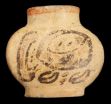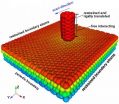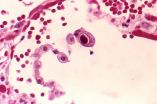(Press-News.org) ATLANTA –January 11, 2012– Updated guidelines on nutrition and physical activity for cancer prevention from the American Cancer Society stress the importance of creating social and physical environments that support healthy behaviors. The report includes updated recommendations for individual choices regarding diet and physical activity patterns, but emphasizes that those choices occur within a community context that can either help or hinder healthy behaviors.
The updated guidelines include recommendations for community action to accompany the four major recommendations for individual choices to reduce cancer risk, saying a supportive social and physical environment is indispensable if all Americans are to have genuine opportunities to choose and maintain healthy behaviors.
The American Cancer Society publishes its Guidelines on Nutrition and Physical Activity for Cancer Prevention to serve as a foundation for its communication, policy, and community strategies and, ultimately, to affect dietary and physical activity patterns among Americans. The guidelines, published about every five years, are developed by a national panel of experts in cancer research, prevention, epidemiology, public health, and policy, and reflect the most current scientific evidence related to dietary and activity patterns and cancer risk. They were last updated in 2006.
The guidelines include four major recommendations, each of which includes several supporting recommendations.
Achieve and maintain a healthy weight throughout life
Be as lean as possible throughout life without being underweight.
Avoid excess weight gain at all ages. For those who are currently overweight or obese, losing even a small amount of weight has health benefits and is a good place to start.
Engage in regular physical activity and limit consumption of high-calorie foods and beverages as key strategies for maintaining a healthy weight.
Adopt a physically active lifestyle
Adults should engage in at least 150 minutes of moderate intensity or 75 minutes of vigorous intensity activity each week, or an equivalent combination, preferably spread throughout the week.
Children and adolescents should engage in at least 1 hour of moderate or vigorous intensity activity each day, with vigorous intensity activity occurring at least 3 days each week.
Limit sedentary behavior such as sitting, lying down and watching television, and other forms of screen-based entertainment.
Doing some physical activity above usual activities, no matter what one's level of activity, can have many health benefits.
Consume a healthy diet, with an emphasis on plant foods
Choose foods and beverages in amounts that help achieve and maintain a healthy weight.
Limit consumption of processed meat and red meat.
Eat at least 2.5 cups of vegetables and fruits each day.
Choose whole grains instead of refined grain products.
If you drink alcoholic beverages, limit consumption
Drink no more than 1 drink per day for women or 2 per day for men.
The authors of the report say the tobacco control experience showed that policy and environmental changes at national, state and local levels are critical to achieving changes in individual behavior. They say similar purposeful changes in public policy and in the community environment are required to help individuals maintain a healthy body weight and remain physically active throughout life. In that vein, the Guidelines also include recommendations for community action:
Public, private, and community organizations should work collaboratively at national, state, and local levels to implement policy and environmental changes that:
Increase access to affordable, healthy foods in communities, worksites, and schools, and decrease access to and marketing of foods and beverages of low nutritional value, particularly to youth.
Provide safe, enjoyable, and accessible environments for physical activity in schools and worksites, and for transportation and recreation in communities.
"Our guidelines have always stressed what people can do themselves to lower their risk of cancer, and that's important," said Colleen Doyle, MS, RD, director of nutrition and physical activity, and co-author of the report. "But we must also take public action to make those behaviors easier for all Americans. We can't just tell people to eat more fruits and vegetables and get more exercise when there are so many forces working against them being able to do that easily, and on a regular basis.
"We've got to work together to ensure that worksites and schools have healthy food options; that our neighborhoods are designed so that our children can safely ride their bikes or walk to school; that people have the information they need to help them make healthier food choices, whether at the grocery store or when eating out.
"The environments in which we live, work, learn and play have a tremendous impact on our ability to make and sustain healthy lifestyle choices. So if we're not working to change those environments so that the healthier choice is the easier choice, we're missing the boat."
The report also reviews the evidence on diet and physical activity factors that affect risks for select cancers, as well as a section on common questions about diet, physical activity and cancer; from coffee and dietary supplements to garlic, fiber, and irradiated foods.
###
The report can be viewed at: http://onlinelibrary.wiley.com/doi/10.3322/caac.20140/full
About the American Cancer Society
The American Cancer Society combines an unyielding passion with nearly a century of experience to save lives and end suffering from cancer. As a global grassroots force of more than three million volunteers, we fight for every birthday threatened by every cancer in every community. We save lives by helping people stay well by preventing cancer or detecting it early; helping people get well by being there for them during and after a cancer diagnosis; by finding cures through investment in groundbreaking discovery; and by fighting back by rallying lawmakers to pass laws to defeat cancer and by rallying communities worldwide to join the fight. As the nation's largest non-governmental investor in cancer research, contributing about $3.4 billion, we turn what we know about cancer into what we do. As a result, more than 11 million people in America who have had cancer and countless more who have avoided it will be celebrating birthdays this year. To learn more about us or to get help, call us any time, day or night, at 1-800-227-2345 or visit cancer.org.
END
Troy, N.Y. – A scientist at Rensselaer Polytechnic Institute and an anthropologist from the University at Albany teamed up to use ultra-modern chemical analysis technology at Rensselaer to analyze ancient Mayan pottery for proof of tobacco use in the ancient culture. Dmitri Zagorevski, director of the Proteomics Core in the Center for Biotechnology and Interdisciplinary Studies (CBIS) at Rensselaer, and Jennifer Loughmiller-Newman, a doctoral candidate at the University at Albany, have discovered the first physical evidence of tobacco in a Mayan container. Their discovery ...
Why do heavy coffee drinkers have a lower risk of developing Type 2 diabetes, a disease on the increase around the world that can lead to serious health problems? Scientists are offering a new solution to that long-standing mystery in a report in ACS' Journal of Agricultural & Food Chemistry.
Ling Zheng, Kun Huang and colleagues explain that previous studies show that coffee drinkers are at a lower risk for developing Type 2 diabetes, which accounts for 90-95 percent of diabetes cases in the world. Those studies show that people who drink four or more cups of coffee daily ...
Nobel laureate poet Rabindranath Tagore once wrote, "Let your life lightly dance on the edges of time like dew on the tip of a leaf." Now, a new study is finally offering an explanation for why small dew drops do as Tagore advised and form on the tips, rather than the flat surfaces, of leaves. It appears in ACS' journal Langmuir.
In the study, Martin E. R. Shanahan observes that drops of water have a preference for exactly where they collect on leaves as their surfaces cool in the morning and afternoon. Those droplets, which condense from water vapor — moisture — in the ...
Scientists are reporting development and initial laboratory tests of an imaging agent that shows promise for detecting the tell-tale signs of Alzheimer's disease (AD) in the brain — signs that now can't confirm a diagnosis until after patients have died. Their report appears in the journal ACS Medicinal Chemistry Letters.
Masahiro Ono and colleagues explain that no proven laboratory test or medical scan now exists for AD, which is claiming an increasingly heavy toll with the graying of the world's population. Patients now get a diagnosis of AD based on their medical history ...
Promoting immunizations as a part of routine office-based medical practice is needed to improve adult vaccination rates, a highly effective way to curb the spread of diseases across communities, prevent needless illness and deaths, and lower health care costs, according to a new RAND Corporation study.
Increasingly, vaccinations are being offered outside of physician offices at pharmacies, workplaces and retail medical clinics. Even so, office-based medical practice continues to be central to the delivery of recommended vaccinations to adults.
"Regardless of where vaccines ...
Similar to the way pavement, softened by a hot sun, will slow down a car, graphene—a one-atom-thick sheet of carbon with wondrous properties—slows down an object sliding across its surface. But stack the sheets and graphene gets more slippery, say theorists at the National Institute of Standards and Technology (NIST), who developed new software to quantify the material's friction.
"I don't think anyone expects graphene to behave like a surface of a three-dimensional material, but our simulation for the first time explains the differences at an atomic scale," says NIST ...
A new clinical Standard Reference Material (SRM) from the National Institute of Standards and Technology (NIST) will help health care professionals more accurately diagnose and treat cytomegalovirus (CMV), a common pathogen that is particularly dangerous for infants and persons with weakened immune systems.
CMV is found in 50 to 80 percent of the population. It is a member of the herpes family of viruses that includes two herpes simplex viruses (the causes of cold sores and genital herpes), the varicella-zoster virus (the cause of chicken pox and shingles) and the Epstein-Barr ...
With a random-looking spatter of paint specks, a pair of cameras and a whole lot of computer processing, engineer Mark Iadicola of the National Institute of Standards and Technology (NIST) has been helping the Federal Highway Administration (FHWA), in cooperation with the American Association of State Highway and Transportation Officials (AASHTO), to assure the safety of hundreds of truss bridges across the United States. Iadicola has been testing the use of a thoroughly modern version of an old technique—photographic measurement or "photogrammetry"—to watch the failure ...
The National Institute of Standards and Technology (NIST), in collaboration with the Centers for Disease Control and Prevention (CDC), has developed two new Standard Reference Materials (SRMs) for measurements of human exposure to environmental toxins. Used as a sort of chemical ruler to check the accuracy of tests and analytic procedures, the new reference materials replace and improve older versions, adding measures for emerging environmental contaminants such as perchlorate, a chemical that the Environmental Protection Agency has targeted for regulation as a contaminant ...
The chemical industry, which touches 96 percent of all manufactured goods, is seeing some positive signs for 2012, although the overall outlook is not very rosy. Growing demand for chemicals used in agriculture, electronics, cars and airplanes will boost an industry that generates $674 billion in sales in the U.S. alone, but expiring patents and global economic woes will take a toll. These forecasts and others are in the cover story in the current issue of Chemical & Engineering News (C&EN), the weekly newsmagazine of the American Chemical Society, the world's largest scientific ...


